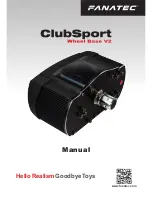
5 Wiring
5.4 Connecting the SSCNET III Cabling
33
FX
3U
-20SSC-H Positioning Block User's Manual
1
Int
roduct
ion
2
Sy
stem
conf
igur
ati
on
3
Exam
ple
C
onnect
ion
4
Ins
tall
a
tion
5
Wi
rin
g
6
Me
m
o
ry
confi
gur
at
ion
and da
ta
7
Befor
e
star
ting
positi
oning
contr
o
l
8
M
anual c
ont
ro
l
9
Posit
ioni
ng
C
ont
rol
10
Table O
per
at
ion
5.4
Connecting the SSCNET III Cabling
5.4.1
Cautions for installing the SSCNET III cabling
SSCNET III cables are made from optical fiber.
If force is applied to the optical fiber in the form of major shock, lateral pressure, haul, or sudden bending or
twisting, the inside will distort or break, and optical transmission will cease.
Carefully read the precautions in this manual when handling the SSCNET III cable(s).
For detailed specifications on the SSCNET III cable(s) or details on the assembling procedure, refer to the
following manual.
→
Refer to the MR-J3-
B Servo Amplifier Instruction Manual
→
Refer to the MR-J3W-
B Servo Amplifier Instruction Manual
→
Refer to the MR-J3-
B Safety Servo Amplifier Instruction Manual
1) Minimum bend radius
Make sure to lay the SSCNET III cable(s) with a bending radius greater than the minimum bend radius.
If the SSCNET III cable(s) has a smaller radius than the minimum bend radius, optical transmission is
interrupted and may cause malfunction.
2) Tension
If tension is applied to the SSCNET III cable(s), the chance of transmission loss increases due to external
forces on the fixing part of the SSCNET III cable(s) or the connecting part of the SSCNET connector. In
the worst case, the SSCNET III cable(s) may break or become damaged. When laying SSCNET III
cable(s), do not apply forced tension.
3) Lateral pressure
If lateral pressure is applied to the optical cable(s), the SSCNET III cabling itself distorts, the internal
optical fiber gets stressed, and the chance for transmission loss increases. In the worst case, the
SSCNET III cable(s) may break. To avoid lateral pressure while laying the cable(s), do not bind the
SSCNET III cabling with nylon bands (TY-RAP).
4) Twisting
If the SSCNET III cabling is twisted, it has the same effect as applying when local lateral pressure or
bending stress. Consequently, transmission loss increases, and in the worst case, the SSCNET III
cable(s) may break.
SSCNET III cable
Minimum bend radius [mm (inches)]
MR-J3BUS
M
25 (0.98")
MR-J3BUS
M-A
Reinforced film cable : 50 (1.97")
Code part : 25 (0.98")
MR-J3BUS
M-B
Reinforced film cable : 50 (1.97")
Code part : 30 (1.18")
















































